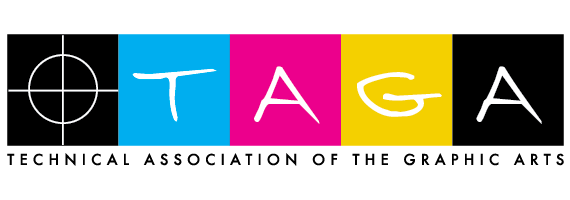SMS Graduate Students Present Research Projects at TAGA ’15

March 11th, 2015, by admin
The 67th Technical Association of the Graphic Arts (TAGA) Annual Technical Conference is being held in Albuquerque, New Mexico, March 22-25, 2015. Four RIT graduate students from School of Media Sciences, Lufei Yu, Peng Cheng, Changlong Yu, and Rattana Mayteekriengkrai, recently completed their Master of Science degree requirements, will present their thesis projects, along with their thesis advisors, at the conference. Below is a list of the title and abstract of each presentation. For additional information on this year’s TAGA conference, please go to http://tagaatc.printing.org/.
Lufei Yu, Robert Chung, and Bruce Myers, “An Investigation of Factors Influencing Color Tolerances” —Tolerance is the permissible difference between sample measurement and the aim and is used to determine the acceptability of a product. A well-known example is the color tolerance of printed solids in ISO 12647-2. The first edition of ISO 12647-2 was published in 1996. It has gone through two major revisions. In the 2004 revision, the magnitude of the color tolerance (∆E*ab) was changed. In the 2013 revision, a new color tolerance metric (∆E00) was included. No literature was found regarding how the changes were made in the ISO 12647-2 revisions. The research questions are: (1) what are %Pass in a database according to the ISO 12647-2 (2013) specifications, and (2) how is the tolerance equivalency between the old and the new metric determined? In this research, %Pass is used to study the effect of color tolerance in a database. Recognizing that tolerance is a man-made decision, if the tolerance is too tight, the %Pass will be low; and vice versa. This research also examines how is tolerance equivalency between the old (∆E*ab) and the new (∆E00) parameter determined. The results show that there is no convergence between ∆E*ab and ∆E00 when using the boundary data. However, there is an equivalent tolerance between ∆E*ab and ∆E00 using the equal %Pass and a database. The current ISO 12647-2 standard, using 3.5 ∆E00 for CMY and 5 ∆E00 for black, resulted in unequal %Pass in the database studied. In order to yield equal %Pass, the black solid tolerance does not need to be different from cyan and magenta solids, but the yellow solid tolerance can be smaller than cyan and magenta solids.
Peng Cheng, Robert Chung, and Bruce Myers, “Matching Printed Color ../assets/img under the Influence of OBA Using a Soft Proofing System” — Soft proofing is a solution for print buyers and printers who want to decrease production cost and cycle time. When print buyers are increasingly specifying brightened papers, the use of the standard printer ICC profile, e.g., SWOP 3 and GRACoL 2006, as the source color space in the ICC-based color proofing workflow, no longer suffice. This is because the proof looks yellowish in comparison to the brightened print with a bluish white point that print buyers desire. To overcome the mismatch between the soft proof and the brightened print, this research builds a number of source ICC profiles, including profiles built using the substrate-corrected colorimetric aims (SCCA), and profiles built using full dataset. By conducting psychometric tests in a soft proofing environment, the results indicate that (1) the soft proof to brightened print match depends on the source ICC profile; (2) source ICC profiles, built from a fully characterized dataset or the substrate-corrected dataset, improve color match between the soft proof and the brightened print; and (3) the degree of color match between the soft proof and the print is image-dependent.
Changlong Yu, Robert Chung, and Bruce Myers, “The Effect of OBA in Paper and Illumination Level on Perceptibility of Printed Colors” — A research was conducted to study the perceptibility of color difference of color pairs, caused by OBA differences in paper substrates, and its relationship with quantitative measurement metrics. Based on the psychometric experiments conducted, the results show the utilization of the visual difference index (VDI), from 0 (no difference) to 3 (noticeable difference), to rate 27 color pairs with each pair prepared by the same colorants but different OBA amount in the substrates. The findings indicate that (a) printed colors are affected by the presence of OBA from no difference to noticeable difference, (b) ∆E00 has a stronger linear correlation with visual color difference than ∆E*ab does, (c) there is no significant association between illumination levels and visual color difference. This research introduces the metric, OBA, per ISO 15397 (2013), as the CIE-b* difference in color pairs under M1 and M2 conditions. It also defines ∆OBA as the OBA difference between any color pairs, including substrates. The results show that there is linear correlation (1) between visual difference and ∆E00 which describes the color difference, and (2) between visual difference and ∆OBA which describes the criticalness of M1 lighting to realize the color match.
Rattana Mayteekriengkrai and Robert Eller, “Packaging Print Buyer Willingness to Trade Off Image Quality for Environmental Benefits” — While consumers are increasingly concerned about environmental friendliness, widely used technologies are not yet capable of producing packaging that combines the highest level of image quality with the highest level of environmental friendliness. As a result, print buyers are forced to tradeoff image quality for increased environmental friendliness. Prior to this research, amount of image quality that print buyers are willing to tradeoff for a given improvement in environmental friendliness had not been investigated.
This research used conjoint analysis to investigate how much image quality print buyers are willing to tradeoff for increased environmental friendliness in the folding carton industry. The experiment defined image quality as a combination of gamut size (the ability to reproduce highly saturated colors) and resolution (the ability to reproduce small features). Environmental friendliness was defined as a combination of carbon footprint (contribution to global warming) and volatile organic compound (VOC) emissions (contribution to atmospheric pollution).
A sample of 17 active and recently retired print buyers participated in the experiment. The results of the experiment were statistically significant for all 17 print buyers at the 95% confidence level. Gamut size was the most important attribute examined. On average, gamut size was responsible for 40% of the print buyers’ preference. Carbon footprint and VOC emissions each contributed approximately 25% of the print buyers’ preference. Finally, image resolution was the least important attribute (contributing approximately 10% of the print buyers’ preference for an offering).
One implication of this experiment is that different aspects of image quality have different degrees of importance to print buyers. A second implication is that environmental friendliness contributed significantly (20% to 65%) to print buyer preference. Both implications bear on the tradeoffs that the industry might be willing to make as it adopts more environmentally friendly production methods.
SMS Connect would like to thank Professor Chung for submitting this article.






Connect with Us